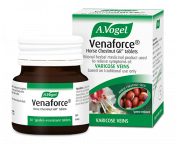An introduction to varicose vein symptoms
Varicose veins occur when veins become stretched, twisted, swollen or damaged. This leads to a disturbance in the normal flow of blood from the legs back to the heart.
Stretching of the vein causes damage to the small valves found inside veins – they start to ‘leak’, allowing blood to flow backwards towards the feet. Varicose veins can be found anywhere in the body but are most common in the legs. The rest of this page will refer only to varicose veins in the legs.
It has been estimated that over 30% of adults will develop varicose veins at some point in their lives. Many will not experience any symptoms. However, for others, symptoms of varicose veins may become problematic. Complications of varicose veins are rare but if these are present it is important to go to a doctor.
Varicose veins symptoms
At the early stages, varicose veins may not give rise to any symptoms apart from a vein which is visible or more prominent.
As the problem develops, a sensation of heaviness, tiredness or aching in the legs may be experienced. These symptoms usually become worse when you have been on your feet, when the weather is hot or when you have been on a long-haul flight.
Symptoms of varicose veins include:
- Painful, aching legs, especially in the calves
- Heaviness in the legs
- Unexplained feelings of tiredness in the legs
- Swelling of your ankles and feet, especially at the end of the day
- Mild itching of the skin
- Throbbing or cramping in your calves or legs with sudden movement or at night
- Restless legs
- The appearance of small snake-like veins or ‘spider veins’, known as telangiectasia.
Often these symptoms are normal, but occasionally they can be an indication of a complication. Read our varicose veins complications page for more information.








